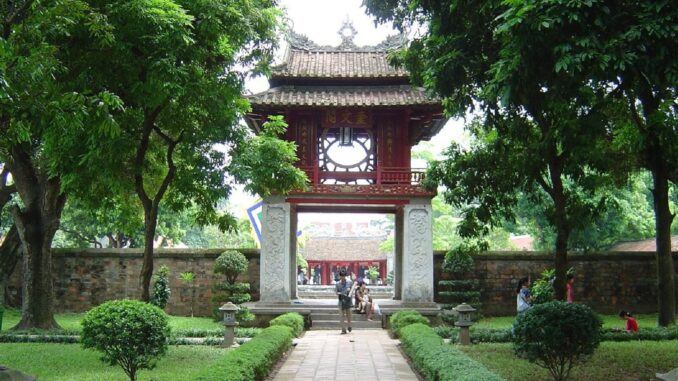
Van Mieu – Quoc Tu Giam also known as the Temple of Literature and National University is a complex on the list of special National Monuments of Vietnam, the pride of the Vietnamese people. With a long cultural and historical background, the relic site has become an attractive destination on tours of Hanoi. At the same time, this is also the place where students come to pray for luck before each important exam.
Introduce
Address: 58 Van Mieu Street, Dong Da District, Hanoi
This is not only the first university in our country but also a place that preserves the cultural and historical imprints of thousands of years of civilization. Today, the Temple of Literature is one of the most famous tourist destinations in Hanoi Capital. Besides, this is also a place to organize activities to honor the tradition of respecting teachers and teachings, demonstrating the studious spirit of students all over the country.
History
The Temple of Literature was built during the reign of King Ly Thanh Tong (August 1070), both as a place to worship Confucian saints and as a royal school for the Queen Mother. Crown Prince Ly Can Duc, aka King Ly Nhan Tong, was the first student of this school. The Temple of Literature was built during the reign of King Ly Thanh Tong (August 1070), both as a place to worship Confucian saints and as a royal school for the Queen Mother.
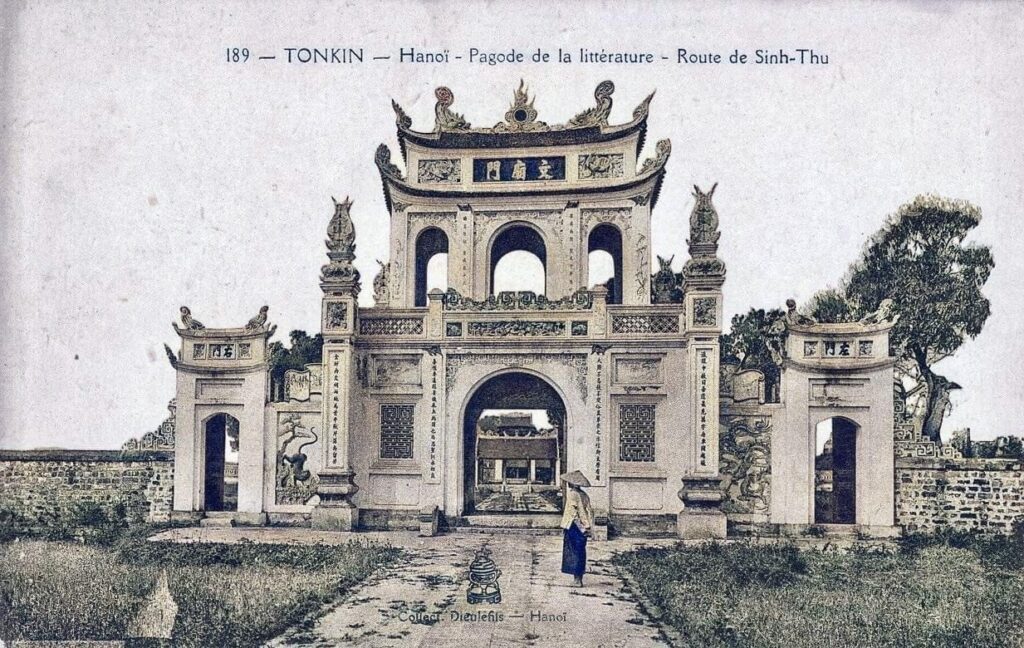
Crown Prince Ly Can Duc, aka King Ly Nhan Tong, was the first student of this school. The Temple of Literature was built during the reign of King Ly Thanh Tong (August 1070), both as a place to worship Confucian saints and as a royal school for the Queen Mother. Crown Prince Ly Can Duc, aka King Ly Nhan Tong, was the first student of this school.
The Temple of Literature was built during the reign of King Ly Thanh Tong (August 1070), both as a place to worship Confucian saints and as a royal school for the Queen Mother. Crown Prince Ly Can Duc, aka King Ly Nhan Tong, was the first student of this school.
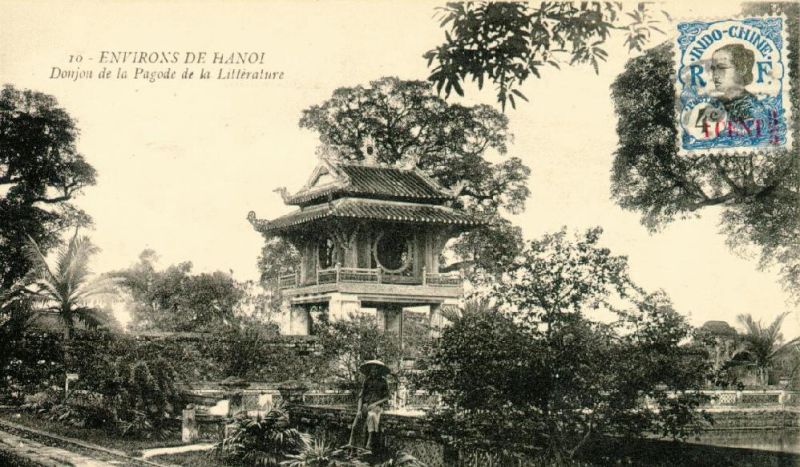
From 1300 to 1357, immediately after King Tran Minh Tong, Chu Van An was invited to take the position of Quoc Tu Giam, corresponding to the position of principal today. He is the manager of activities related to Quoc Tu Giam, including teaching Crown Prince Tran Vuong. Confucianism was very popular in the Later Le Dynasty. King Le Thanh Tong ordered the erection of stone steles for those who passed the doctoral exam from the 1442 exam.
Temple of Literature played an important role in Vietnamese education and culture for centuries. It was a center of learning and scholarship, and it produced many of Vietnam’s most distinguished scholars and leaders.
In the 19th century, the Quoc Tu Giam was closed by the French colonial government. It was reopened in 1904, but it was not until after Vietnamese independence in 1945 that it was restored to its former glory.
Today, the Temple of Literature – Quoc Tu Giam is a popular tourist destination. It is also a place of cultural significance for the Vietnamese people.
Architecture
The Temple of Literature complex bears the bold architecture of the early Nguyen Dynasty and is located on a large rectangular plot of land with an area of 54,331 square meters, including many works with different unique architecture. The Temple of Literature campus is surrounded by four solidly built brick walls.
Experiencing the ups and downs of history and the renovation process, this relic now includes Ho Van (Literature Lake), Van Mieu Mon (the Temple of Literature Gate), Dai Trung Mon (the Great Middle Gate), Khue Van Cac (Constellation of Literature Pavilion), Giang Thien Quang (Well of Heavenly Clarity), Bia Tien Si (Stelae of Doctors), Dai Thanh Mon (Attained Talent Gate), and Nha Thai Hoc (Thai Hoc House).
This relic complex is designed according to a symmetrical layout for each zone and each layer on the North-South axis. In front of the Temple of Literature is a large lake called Ho Van. From the main gate, there are four pillars, on the left and right sides there is a “Bia Ha Ma” (Stelae commanded horsemen to dismount), and the area is surrounded by high walls.
The Temple of Literature is divided into 5 distinct areas separated by walls, and to enter each inner area, you will have to go through a door system including a main door and two side doors on both sides.
Top destinations to explore
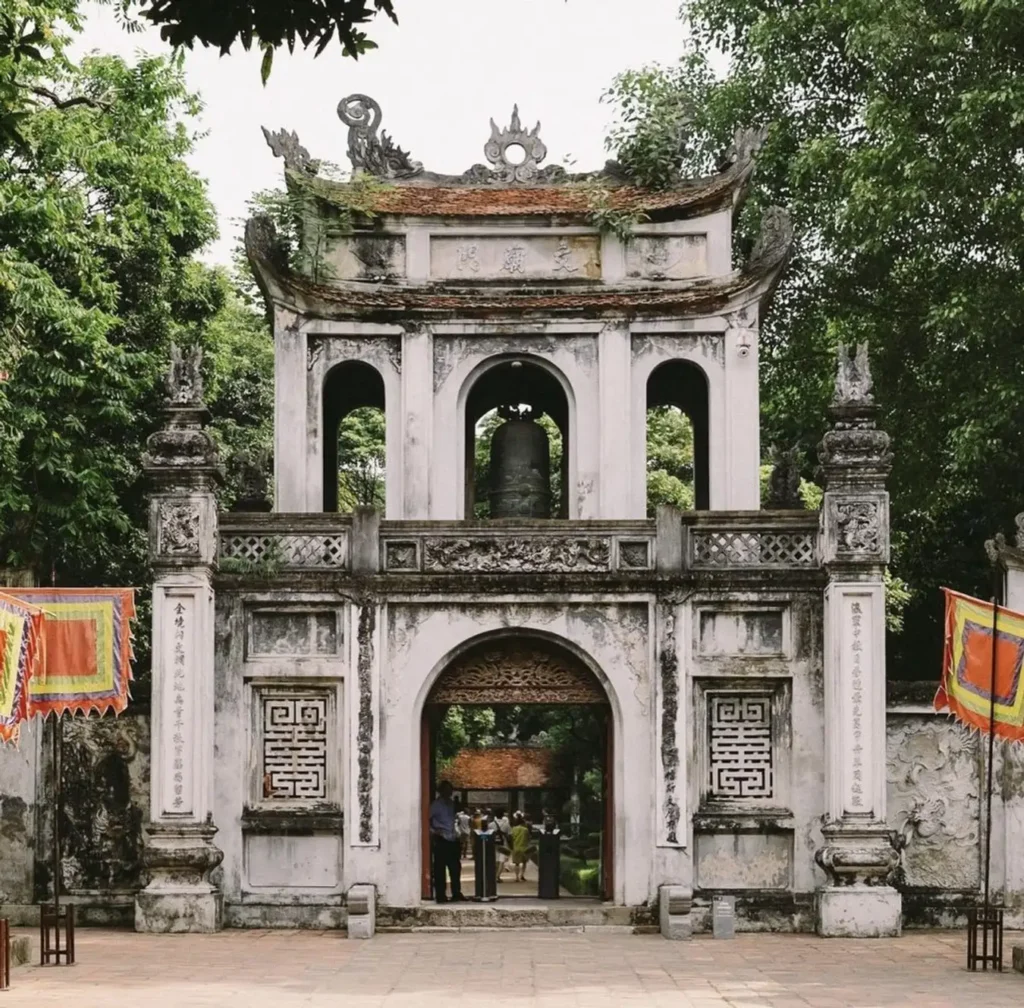
Van Mieu Mon (the Temple of Literature Gate)
It was built with three main doors and 2 tall floors the upper floor is engraved with 3 great characters called Temple of Literature according to ancient Chinese characters, and on top is a motif of “luong long chau nguyet” (two dragons flanking the moon), creating a unique and delicate feature for the construction. architectural program. In front of the Temple of Literature are four pillars of the gate in the middle, along with two Ha Ma steles on both sides.
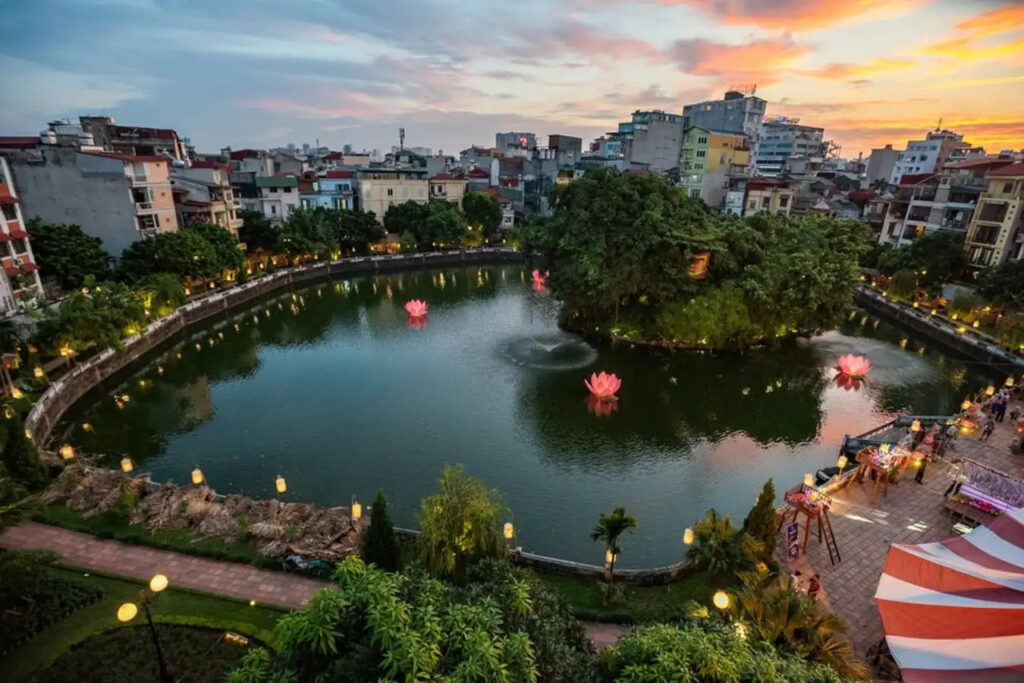
Ho Van (Litarature Lake)
It is located right in front of the Temple of Literature gate. According to historical books, Van Lake is a large-scale project with an area of up to nineteen hundred meters. Located in the middle of Van Lake is the Kim Chau mound, on which Phan Thuy Duong was built. In the past, Phan Thuy Duong was a place to comment on the poetry and literature of Confucian scholars.
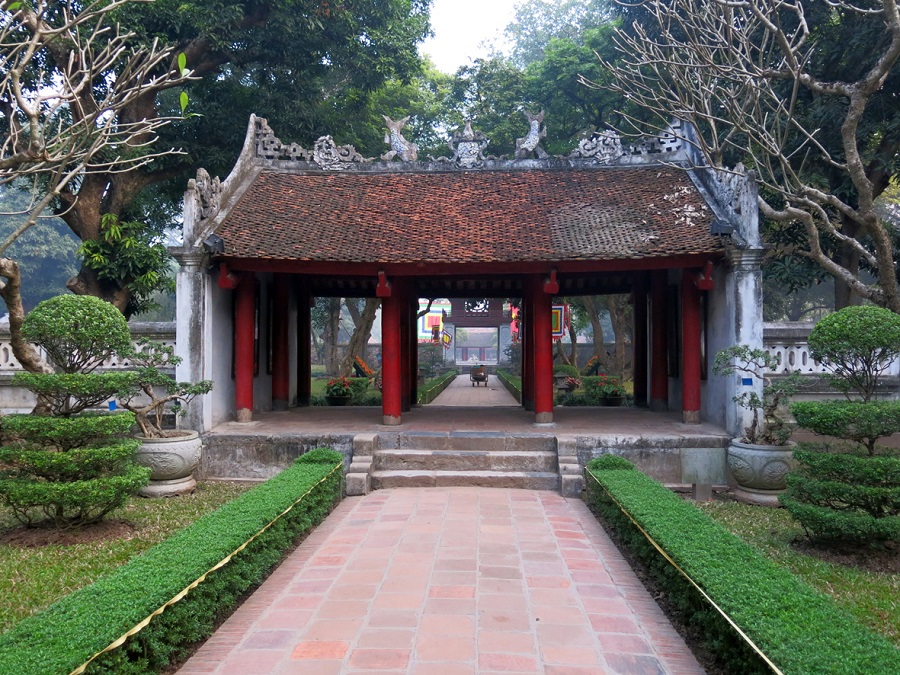
Dai Trung Mon (the Great Middle Gate)
This place has the typical architecture of a traditional Vietnamese communal house, consisting of three rooms covered with funny-nosed tiles. On top of the gate is a carp image, said to represent students. Students must study hard to pass exams, just like a carp must overcome big waves to become a great and powerful dragon.
Khue Van Cac (Constellation of Literature Pavilion)
It was built in 1805 under the reign of King Gia Long, impressing visitors with its extremely unique architecture. This place is designed with a square floor with 8 roofs, nearly 9 meters high. The architecture consists of four square brick pillars with intricate patterns below, serving as a support for the upper floor. The upper floor is said to be a “shining gem” of the Temple of Literature relic.
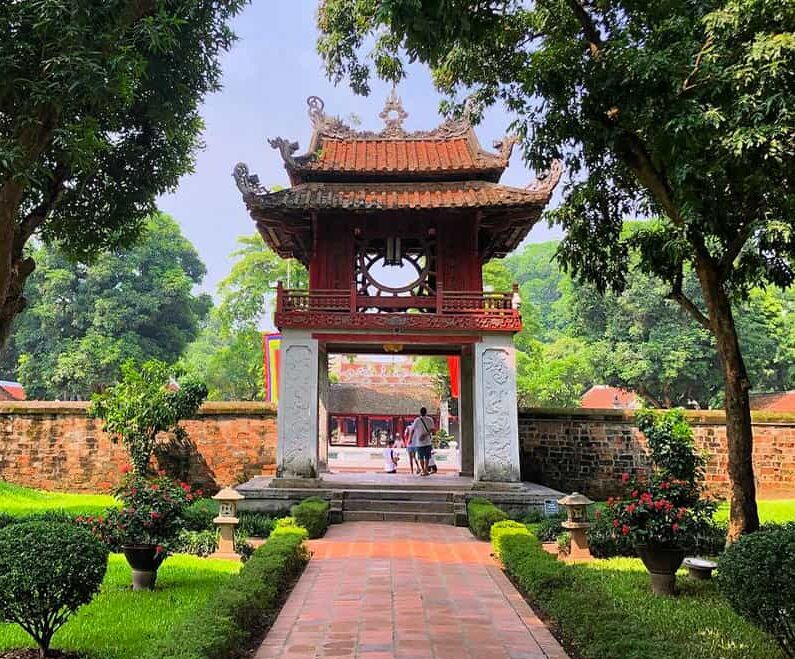
It was prominently designed with four shining sun-shaped windows along with a red tile roof overlapping 2 layers, creating a special roof structure. On both sides of Khue Van Cac are two doors named Bi Van (Magnificence of Letters Gate) and Suc Van (Crystallization of Letters Gate), leading to each stele building of the Doctor of Literature Temple – Quoc Tu Giam.
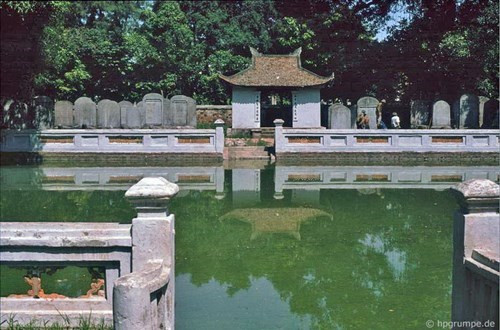
Gieng Thien Quang (Well of Heavenly Clarity)
It has a very special square shape and is surrounded by corridors. According to ancient beliefs, the square shape of Gieng Thien Quang symbolizes the earth, and the round box on Khue Van Cac (Constellation of Literature Pavilion) symbolizes heaven. These two works represent all the essence of heaven and earth gathered at the largest cultural and educational center in Thang Long capital.
Bia Tien Si (Stelae of Doctors) and UNESCO recognition
This is considered one of the priceless cultural heritages – the stone histories left by our ancestors. Furthermore, these stelae are also a symbol and the most eloquent encouragement to study for ancient scholars as well as today’s students. The stelae of Doctors were honored to be placed at the Temple of Literature.
This is the place to honor the names of those who passed the doctoral examinations of the Le and Mac dynasties. On each stele, an essay is engraved in Chinese characters, recording the history of the examinations held from 1442 to 1779. There are 82 stelae corresponding to 82 examinations. The first stelae of Doctors was erected in 1484 during the reign of King Le Thanh Tong, recording the history of the examination in 1442. The last stele was erected in 1780 for the examination held in 1779.
Each stelae of Doctors is a unique work of art, it also has sophisticated sculptures, vividly reflecting the daily life of the people.
In March 2010, 82 stelae of Doctors of the Le – Mac dynasties at the Temple of Literature were recognized by UNESCO as a World Documentary Heritage in the Asia-Pacific region. As of July 27, 2011, 82 stelae of Doctors continued to be recognized as World Documentary Heritage on a global scale.
This recognition is a meaningful gift for Hanoi and the entire country of Vietnam. It is not only a recognition of a precious legacy left by our ancestors to Hanoi but also a part of a beautiful picture of a thousand-year-old capital of culture and heroism.
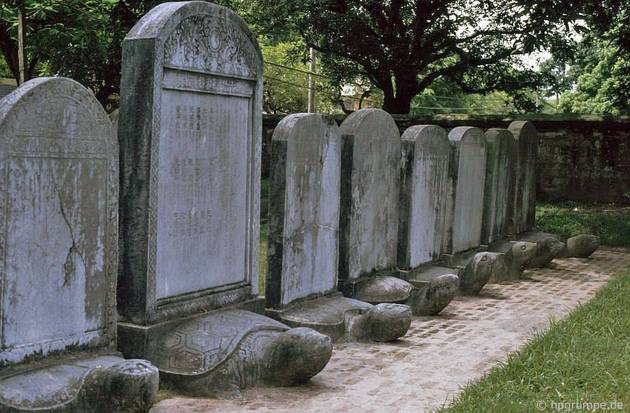
Conclusion
Today, the Temple of Literature is not only a tourist destination but also a place for many Vietnamese people to learn about their roots and be grateful to the talented people in history who created a part of our country nowadays. It is also an invaluable cultural asset of the Vietnamese people, a symbol of honoring learning and learning, and a tradition of training talented people to supplement the vitality of our country. Therefore, the stone stele is recognized, is a world documentary heritage, and is a source of national pride and self-respect.
Get an opportunity to visit Vietnam through Vietnam E-Visa!